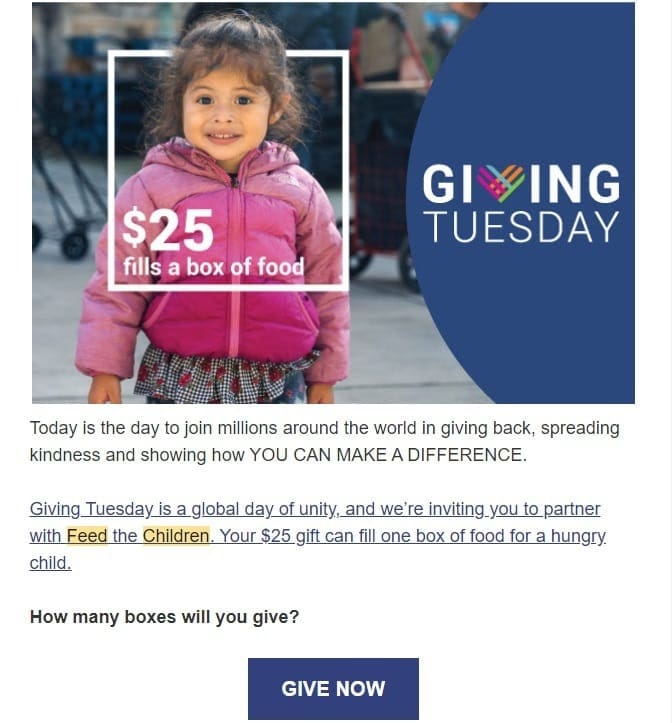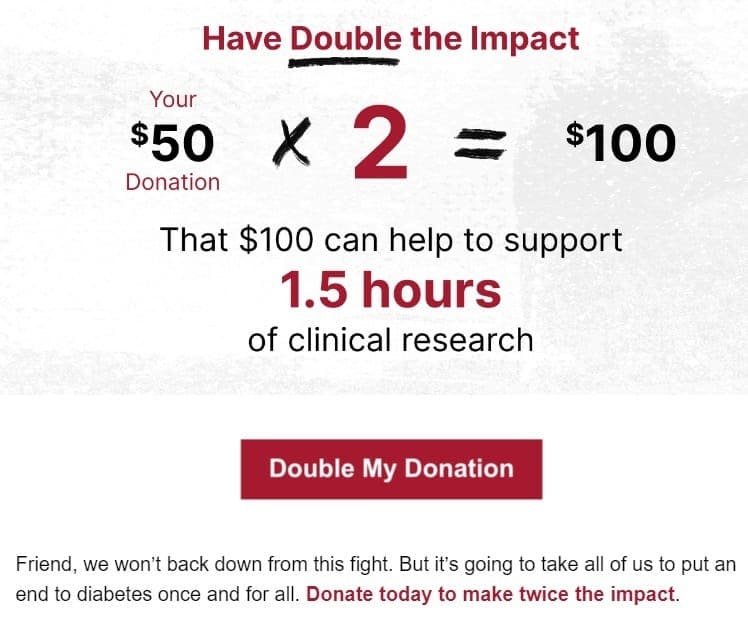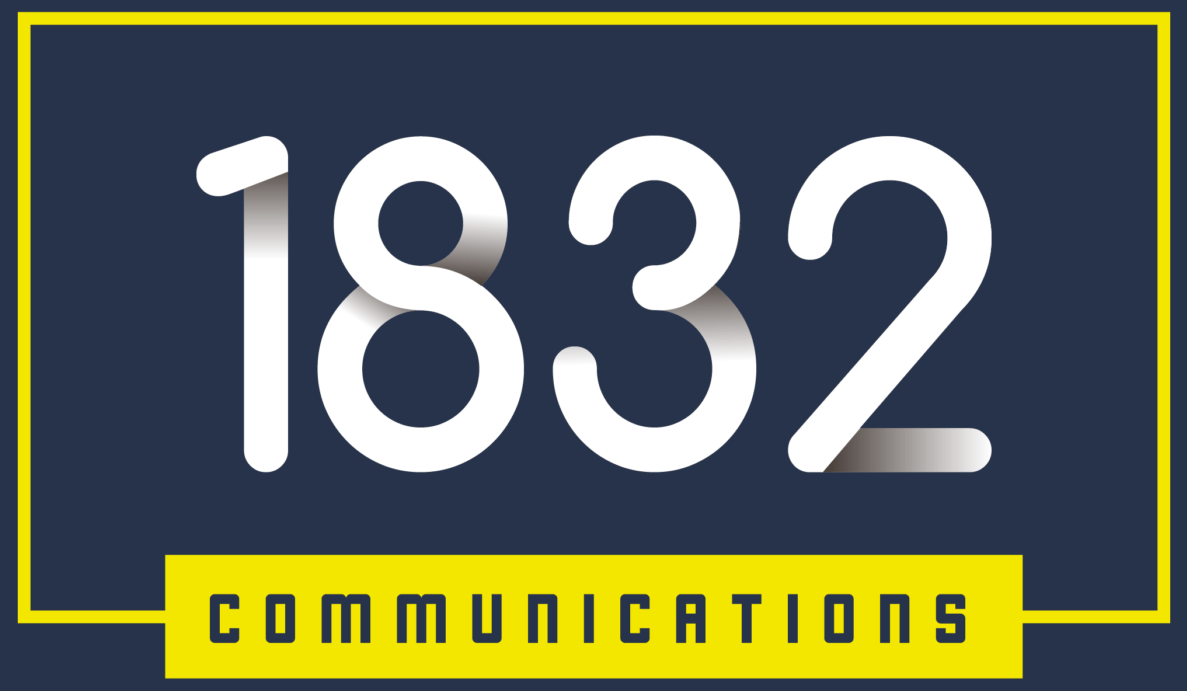Using big numbers to solicit donations may work well. What do I mean? Watch fundraising expert Cherian Koshy discuss big numbers vs. the story of one. (At the 5:35 mark)
Which of these would work better in a solicitation email?
A) 30,000 people face hunger daily in our city. Please donate $25 to help feed them.
B) Your donation of $25 helps ensure that Dana has food today for her and her daughter Ruth.
In A, the number of people facing hunger is large. I may feel that my $25 is only a drop in the ocean and won’t really help solve the problem. So I won’t give.
B has broken a large problem into a small piece and shared the story of one person (or in this case, one family). As a donor I can clearly see how my donation will solve a problem and who will be helped. I’m more likely to give.
Take a look at this ask from Feed the Children:

The picture? Attention grabbing. The ask amount? Works. The problem being solved? Easy to understand. The impact? Clear.
Keep in mind that food banks have a similar problem like the Easterseals example above. When I see an email which says “$25 feeds a family of four for a week” my immediate thought is: Is that true? Even with food rescue and purchasing in bulk, that’s 21 meals for four people for a little over a buck per meal.
If the copy said “helps” feed, that’s true. $25 is part of what’s needed to help feed them. It’s not the most transparent but they’re not lying. If you say “feeds,” then you might get people questioning the math. That’s not what you want with a fundraising ask.
So how can you decide small ask amounts for a big problem you’re trying to solve? There’s no easy fix.
One potential solution is to consider dynamic ask strings. Know what each donor gave last year and personalize the ask so they give more this year. Now you don’t have to decide for them- they made a decision in the past and you build off of that.
For new donors, share the problem and let them decide a gift amount. I’m not a fan of this approach, as I like to post some giving amounts (with corresponding impact) to move them towards giving.
A second solution is considering something like this ask from the American Diabetes Association (ADA):

They took a large problem- research to find a cure for diabetes which costs millions- and they broke it up into small chunks. That allows them to make a small ask that shows impact.
Each 90 minutes of research can bring the ADA closer to a cure.
Obviously, a large volume of donations is needed. They need thousands of these small gifts to help fund the cure. And donors know that.
But it gives people a problem to solve. Breaking up a large sum into a digestible amount can be helpful. If all I can give is $50, at least I know I am donating to the overall fight against diabetes.
Is the above example perfect? No. But if you work for an organization where the mission cost is high, you can’t send a letter to everyone on your list asking for $100,000.
When possible, break things down. Tell the story of one. Make the ask, the giving and the impact digestible.
You’ll raise more from more people which will allow you to have more impact. That’s one way to go from survival to thrival.



